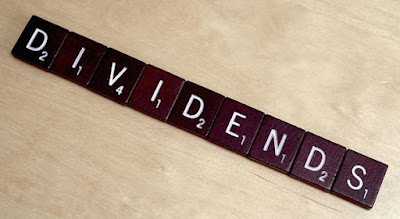The Basics Concerning Dividends
Recently, while on my trip to Atlanta, I was discussing some rationale with my cousin around the topic of investing in stocks and options and they were interested in learning but as with most stock market matters lay people are often in a fog around the topic simply because we are not being taught this in school. This fog is often why we are not more apt to invest in the stock market directly or without an intermediary like a financial advisor.
Nonetheless, on my blog, I'm all about bringing information to the layman or woman in laymen terms that will help to empower them in making investments in the stock market. I don't profess to know everything about everything in investing, but based upon my knowledge and experience in doing so, I feel pretty comfortable that I can discuss a framework that can guide you in a good direction.
What are Dividends?
My cousin gave me a homework assignment to which I don't want to disappoint that they wanted to know what a dividend was. Often, I like to go to Investopedia when I have a question about a term I want defined and because they present a little video to help demonstrate a concept. Because this helps me, perhaps it can help you as well, so I have included link to short video here that answers this question as to what a dividend is. I don't think I could have said it better that a dividend is cash from a company's profits returned to its shareholders. The shareholders are those who own share(s) of stock in that company, i.e. an Apple(AAPL) or a Tesla(TSLA), etc. Ownership of a stock entitles a shareholder to that dividend, which when paid, they have the choice to reinvest in the company by buying more shares, using it to buy the shares of another company, and saving or spending it as they so choose.
Some Companies Pay Them, Some Do Not
There are estimates of approximately 630,000 publicly traded companies, of which not all of them pays a dividend. Most of these companies are perhaps small and just starting out; thus, profits are re-invested back into to business in order to grow or a company may be more mature, but in a growth phase where profits invested back into the business contribute directly to top and bottom line growth and larger profits in the future. There are several examples of companies that pay a dividend like Walmart(WMT), Disney(DIS), Nike(NKE), McDonald's(MCD), Starbucks(SBUX), and Apple(AAPL). Also are examples of a companies that don't like Tesla(TSLA), Netflix(NFLX), Amazon(AMZN), Facebook(FB), and Alphabet(GOOGL).
Who Pays Dividends?
You can lookup a stock by it's ticker symbol, i.e. FB, AMZN, NFLX, etc and typically, you can tell if a company pays a dividend if the stock's Yield is greater than zero. The yield is derived by taking the annual dividend amount per share/stock price. To arrive at how much the dividend amount was, simply take the (stock price x percentage yield). An example is Ford(F) with a $11.13 stock price and 6.74% yield (11.13 x 0.0674) = $0.75 per share annual dividend. If you bought stock in Ford, say for $11.13 and say the price and dividend remained constant for the next 15 years, soon the accumulation of dividend returns would exceed the amount you initially paid for the stock itself. It's pretty cool when your investment start to make an infinite return.
Balance Is Key
If a company does or does not pay a dividend is not necessarily a bad thing. Both can be equally good depending on the cycle a company is at in it's growth stage. It is ideal to try to compose a portfolio that has a mixture of solid companies of which some pay dividends and some don't. The mixture can give ability to see portfolio have capital appreciate potential along with aspects of capital preservation and stability. I have put together a combination of such that can be purchased on Motif Investing under
In Closing
This was a quick stock basics on what dividends were and how to determine stocks that pay a dividend, what the compounding of dividends over time can do for you investments portfolio, and how a balance of dividend paying and growth stocks can be good for a portfolio.
 Please
provide feedback or questions pertaining to this blog post by leaving a
comment below. Also please be sure to share this content with your
friends and family. I thank you in advance.
Please
provide feedback or questions pertaining to this blog post by leaving a
comment below. Also please be sure to share this content with your
friends and family. I thank you in advance.
Also, next time you think to shop at Walmart online, how about clicking through on the banner ad at the bottom of my blog site. It will be appreciated, but also check out my blog post Loyal3 10 Stock Plan. If you are spending money in Walmart, you should be owning it too!
Subscribe to my blog @ http://oslifemoneypoliticsnotherthings.blogspot.com or on the right side of this page in the Follow by Email box.
 Please
provide feedback or questions pertaining to this blog post by leaving a
comment below. Also please be sure to share this content with your
friends and family. I thank you in advance.
Please
provide feedback or questions pertaining to this blog post by leaving a
comment below. Also please be sure to share this content with your
friends and family. I thank you in advance.Also, next time you think to shop at Walmart online, how about clicking through on the banner ad at the bottom of my blog site. It will be appreciated, but also check out my blog post Loyal3 10 Stock Plan. If you are spending money in Walmart, you should be owning it too!



No comments:
Post a Comment